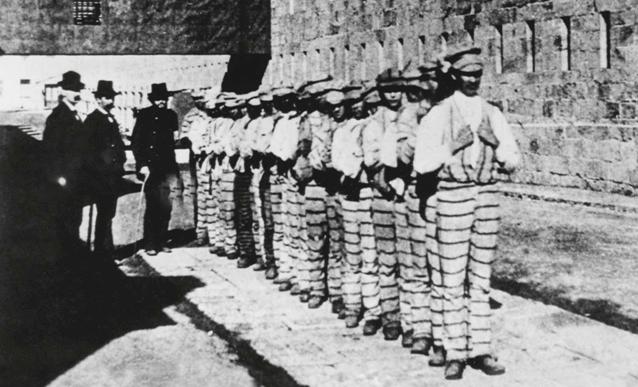Conclusion
Newspapers wrote fancifully about James Seaman's being a "broken man" whose hair suddenly had turned grey. What was said about Bill Weeks was more concrete. He confessed to more crimes, including the unsolved torching of a shop in Huntington. It also was claimed that he had told one official that his life sentence "would be for the best," because he would have shelter and regular meals, instead of constantly living on the run and having to steal to get food.
The two men began their respective life sentences at Sing Sing, one of Weeks' several alma maters. Seaman may not have known what to expect at the barren, solid stone complex, but Weeks did. Prisoners' lives were tightly regulated there. To move between their cells and work details (or training classes, which included knitting!), the men had to march in "lock step" - tight single file, stepping in unison, each man's hands resting on the shoulders of the man in front of him.

www.singsingprisonmuseum.org

Sing Sing Prison Admission Register for James Seaman, April 23, 1880
In the end, justice seemed to prevail in this case, although its circuitous, uncertain route makes one question how often it got to prevail on Long Island during the 1870s and 1880s. All told, this era probably was not Hicksville's finest hour.
***
I've got a Photo Left Over!
Some time ago, I came by this photograph. I wish that I could provide a credit for it, but at present I have no idea where I found it. I offer my sincere apologies to the unknown source.

Postcard of Hicksville Depot by Rave's Pharmacy
This is one of the few surviving photographs of the little Hicksville LIRR station which existed when the events described in this article occurred. The photographer was facing east, standing to the north side of the Main Line, which was then only a single track. The Jerusalem Road was behind him, immediately beyond the water tank that quenched the thirst of passing steam locomotives. Looking ahead, Broadway was just beyond the depot, running through the gap between the two buildings on the right, where the white sign post can be seen. To the north (left), the freight yard was filled with wooden box cars.
Just before 1910, this station was demolished, the tracks through Hicksville were rearranged, and a new station was constructed to the west of Jerusalem Avenue.
That's it for this month.
Ciao!

